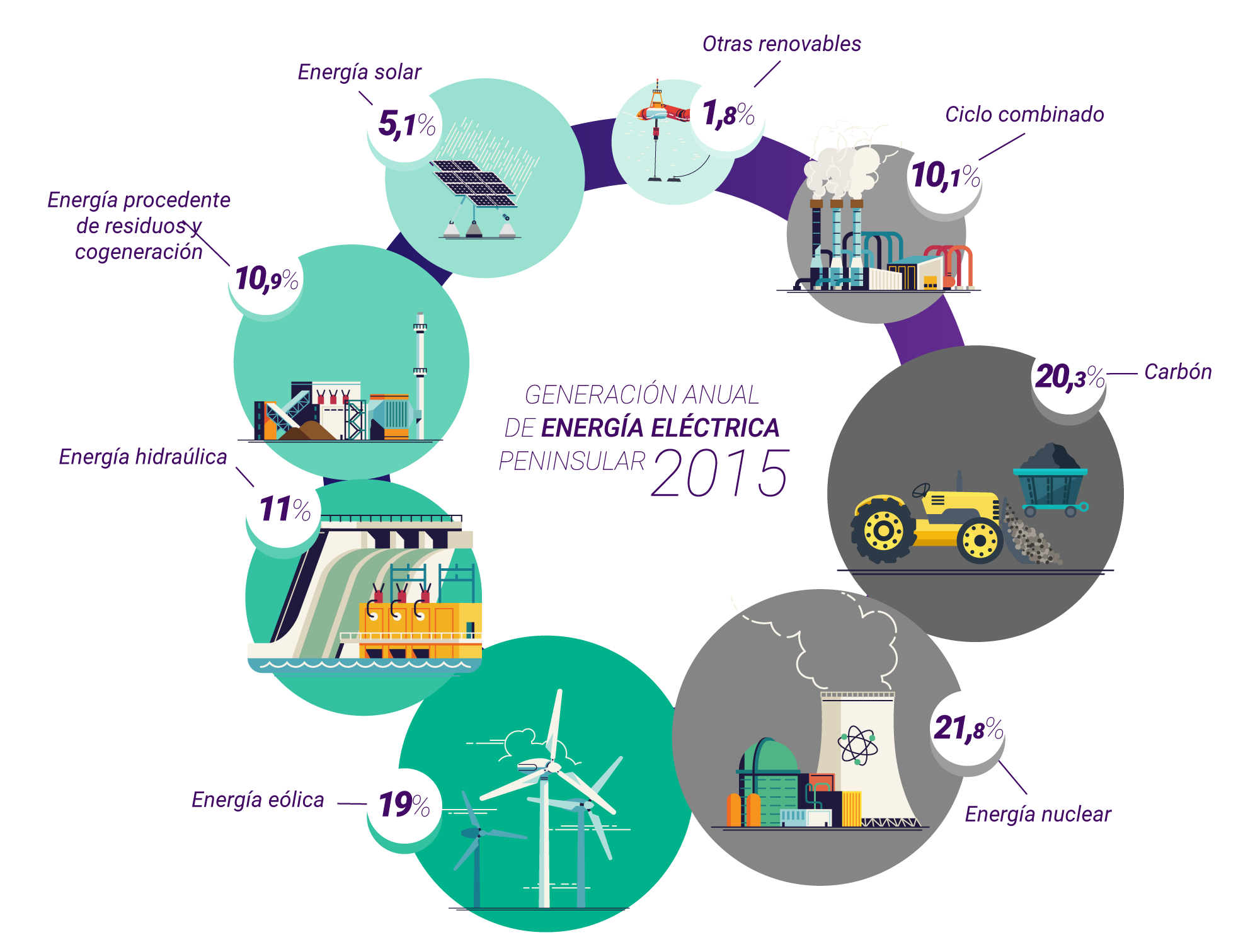How does electricity get to our lives?
How does electricity get to our lives?
_We have grown up with electricity. It is part of our lives and a service as simple as giving a switch. But behind that gesture there is much more than cables: professionals, facilities, protocols of action ... Not in vain, and according to the Spanish Association of the Electrical Industry (Unesa), the sector generates, only in our country, more than 50,000 direct jobs and of the order of the indirect 400,000. It is the business area that has the most clients and contributes 1.9% of Spain's GDP. Moreover, the investment made by the electricity companies exceeds 2,200 million euros per year, which makes them the most investments in the Spanish economy.
Every day thousands of professionals work so that none of us lack that daily energy. Many work as technicians in power generation plants and are part of the first step of the process for light to reach our homes. We are talking about the generation, which consists of transforming a primary energy source into electricity.
_Renewable energies have undoubted advantages: among others, they do not produce CO2 emissions, generate little waste or reduce dependency on the outside, but also present some drawbacks, as is the case of their intermittency: they depend on whether there is recourse, wind or sun. _
_This characteristic of renewables, together with the inability to store electricity in large quantities, means that these technologies have to be complemented with others, such as combined cycles, which ensure a rapid and efficient response to ensure the energy supply.
_ Renewables need other energies to complement each other, such as combined cycles, which ensure a rapid and effective response to ensure energy supply when there is no wind or sun.
Anyway, if we only focus on Spain and attend the last 'Report on the Spanish electricity system' published by Red Eléctrica (RE), we will see how renewables also have a prominent role in the global production of peninsular energy in our country. which were 36.9% of the total in 2015._
Coal and combined cycles increased their production compared to 2014 and last year accounted for 20.3% and 10.1% of the peninsular production of electricity. For its part, nuclear contributed 21.8% of the total.

Source: http:www.elmundo.es/promociones/native/2016/11/04/
Follow me: @carlosblue27k